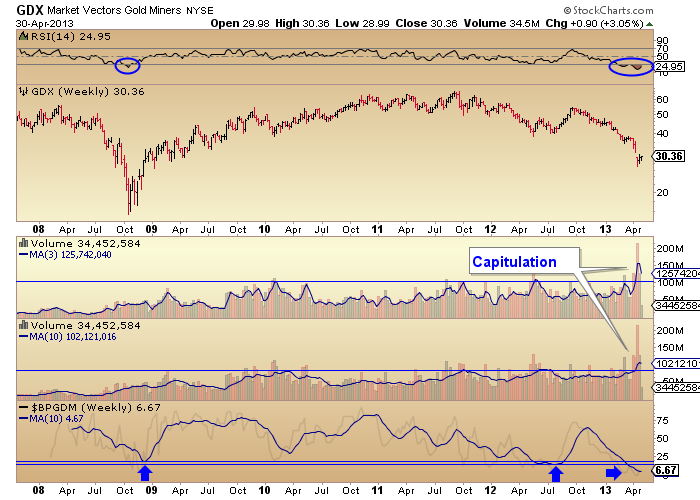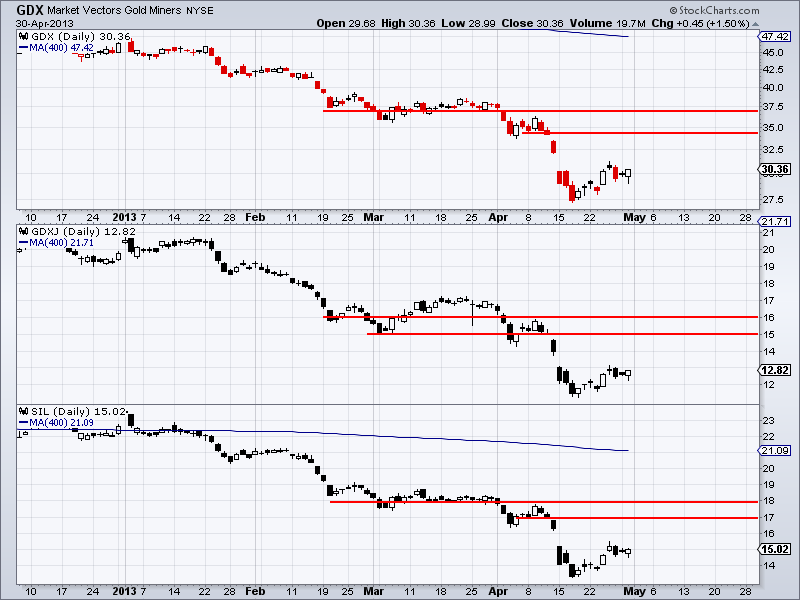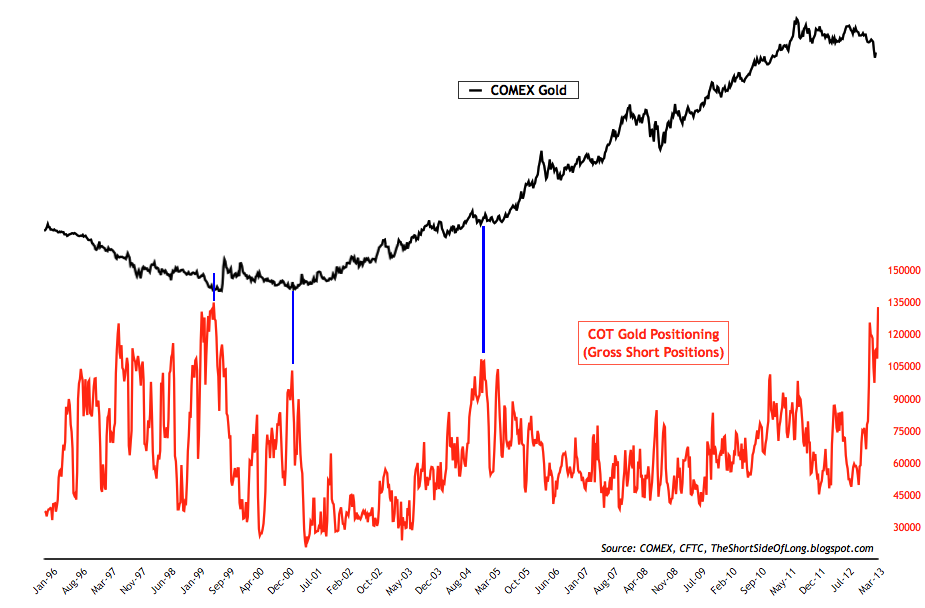Gold prices are down in the short term, but the commodity metal is here to stay, says geologist Joe Mazumdar. In this interview with The Gold Report, the Canaccord Genuity analyst assesses the current situation and compares the performance potential in the field.
COMPANIES MENTIONED : ESPERANZA RESOURCES CORP. : GOLDCORP INC. : GOLDROCK MINES CORP. : MIDWAY GOLD CORP.
T he Gold Report: Where can long-term gold investors look for safety during times of market turbulence?
he Gold Report: Where can long-term gold investors look for safety during times of market turbulence?
Joe Mazumdar: Is there safety in the gold market? The short answer is no. Both the equity and gold market have been volatile, lately more the latter. Gold stocks have a good correlation, a beta, to gold, and if the price of gold is volatile, the stocks will be volatile. This leverage to the gold price cuts both ways for gold equities. Year to date, gold is down 10–15% as it has underperformed most commodities including copper, oil and natural gas, while the S&P/TSX Global Gold index is down almost 30–35%.
Other reasons why the gold equities have disappointed investors includes the failure to achieve benchmarks or guidance on costs, both operating and capital, and timelines, among others. The overriding financing risk, especially for the juniors, has continued to weigh on their performance.
Major gold producers provide liquidity, but are not necessarily a safe bet. Over the last few years, the large gold companies have not shown growth at a reasonable price. The amount of reserve repletion they require is their Achilles heel such that they have focused on dividends. This is nothing new, as the project requirements tend to create significant footprints and attract the attention of other stakeholders who want to slow down or cancel mining development.
Investors should seek out companies that have strong working capital positions relative to their near- to medium-term business plan needs, while taking into account their leverage to gold price. The chosen firms should be able to generate decent margins at current spot levels. We would be wary of companies that are in the midst of a material capital cycle, especially if a significant proportion of the funding was expected to be sourced from organic cash flow. Gold has bounced back well over $1,400/ounce ($1,400/oz), but the stocks can be stress tested to $1,200/oz. We should anticipate more hedging requirements linked to debt financing facilities.
For intermediate producers, look for decent margins at spot levels and stress test down to $1,200/oz. But be wary of any upcoming capital cycle that the firm is looking to execute in the near to medium term. If a company is trying to manage a 10% compound annual growth rate of production, how much new capital does it need and over what period? What is the cash flow? Will it need to return to the debt markets? Look for well-funded developers that do not need to return to the equity markets over the near term.
Seek management teams that have proven capacity to take the project into production. The amount of multiple mergers and acquisition (M&A) bids for targeted companies is few. While some decent premiums can be had, they tend to be off of 52-week lows. For M&A potential, I look for a team that can accrue value to the project by derisking it—a team that has previously permitted, developed and produced comparable projects in similar jurisdictions.
For explorers, look for companies with working capital positions that can fund at least a two-year business plan, can move the project forward and are not just burning general and administrative expenses. Executives and senior managers must be vested in the success of the project.
TGR: Let’s talk about the comparative advantages and disadvantages of sinking capital into underground versus open-pit and heap-leach operations.
JM: Underground projects create a smaller footprint, which is advantageous for permitting. The upfront capital expenditure can be lower as these projects have lower throughputs, so the plant costs are lower. But capital costs for sustaining development underground are higher than for open pit. Underground mining conditions can be problematic, especially with narrow-vein mining. Underground miners are harder to find and take longer to train than open-pit miners.
Because open-pit mining creates a larger footprint, the exposure to permitting risk may be elevated. All things being equal, open-pit operations tend to treat a higher volume of lower-grade material, which depending on the process flow sheet would be more exposed to power costs such that proximity to infrastructure is vital. For a heap-leach project, power is less problematic, but heap-leach projects range from run-of-mine to three-stage crush. So depending on a mine’s exposure to an advanced circuit, power can still be an issue.
TGR: How do base metals fit into the equation when assessing potential returns on a gold mining property?
JM: Base metals such as copper provide a diversification of revenue and potential for by-product credits, as does silver, allowing a gold producer to lower its reported cash costs. Some large low-grade deposits that some majors have targeted tend to be porphyry related and deposit type, which provides copper mineralization. The size of these deposits is what attracts the majors; however, the grade (less than 1 g/t gold) exposes these projects to capital escalation due to scale and potential for scope changes over a protracted development timeline. Also, the footprint of these deposits, as mentioned previously, can be problematic for permitting and gaining a social license to operate. Geologically, there are also high-grade deposits such as volcanic hosted massive sulphide deposits that carry significant base metal credits as well.
The significant base metal component of some of these deposit types requires the sale of a concentrate to a smelter/refinery rather than a final saleable product such as gold. This creates an issue for some gold companies, though, because they’re generating a fungible product such as gold dore, which does not require as much marketing expertise as selling a concentrate.
TGR: What do you mean by marketing?
JM: Gold is sold close to a final product with minor additional refining required, but a base metal concentrate containing gold needs to be sold to an intermediary such as a smelter. The seller is not only exposed to base metal and gold prices, but also to treatment and refining charges (TCRCs) of the intermediary. The TCRCs are cyclical, and they impact the revenue stream. The positive aspect of producing base metals is the benefit of a diversified revenue stream, which is good for maintaining a stable cash flow. In the past, investors paid premiums for gold-dominant (>70%) revenue streams. Given the erosion of the highly sought gold premium of late, it is now less problematic for a gold company to generate non-gold revenue.
TGR: Let’s talk about the importance of cash flow.
JM: Previously there was an emphasis on operating cash flow and not on free cash flow. The delta between the two line items resides in the inclusion of investing activity such as development and sustaining capital expenditures. Free cash flow is a better indication of a project’s profitability. But note if a company has issued a significant portion of debt to fund the project, it may have significant principal payments that can eat up the free cash and challenge its working capital position.
TGR: How does Mexico stack up in the global gold matrix?
JM: The Institutional Revolutionary Party (PRI) government had been in power in Mexico for a long time. The Partido Acción Nacional (PAN) held political power over the past decade, and now PRI is back. The government is very pro-resource development. In an important change, royalty legislation is slowly moving through Mexico’s Congress. The royalty looks as if it will not be a net smelter return, which would impact the revenue line directly, but a 5% net profits interest (NPI), which takes operating costs into account. Given that Mexico does not currently have a mining royalty structure, an NPI is not necessarily a bad thing. Mexico remains one of the largest gold and silver producers in the world. I think security remains an issue in some states such that we would anticipate higher general and administrative costs for some projects to include funding to mitigate security risks.
TGR: How do you feel about adding names in Argentina to your coverage list?
JM: People who are familiar with operating in Argentina are comfortable with purchasing assets at a discount. M&A in Argentina offers a lot of upside potential in the face of an inflating cost environment and issues with import restrictions combined with attempts to curb the outflow of capital by the government.
TGR: What about the possibility of those assets being nationalized?
JM: In early 2013, Argentina ended its Oil Plus program to encourage investment in the industry. This suggests that the Argentine government has gained a greater understanding into the mindset of foreign investors that possess the critical skill sets to help it develop its resource sector.
Argentina does not have a significant mining history like Chile when the latter nationalized its copper industry. The lack of mining history translates to a lack of technical people that would allow the local government to develop and operate these projects. Argentina still needs foreign capital and technical skills to build its mining industry. Also, Argentina needs to generate export revenue to maintain and grow its current account balance. Producing and exporting mined metals would help some of its near-term issues.
Although I doubt that a company without a current interest in Argentina will acquire an asset given the geopolitical risk, a firm already generating cash flow within the country would see some Argentina assets as opportunistic given the discounted valuations.
TGR: Is Nevada particularly hot right now?
JM: It’s been hot for the last two to three years. As investors get more concerned about geopolitical risk, they tend to revert to familiar jurisdictions. The big operators in Nevada tend to be more focused on their own operations and their brownfield projects. The permitting process in the state is protracted but it is transparent. Investors seeking lower-risk geopolitical jurisdictions would rather have a protracted permitting timeline with a transparent permitting process rather than a quick path to production with a future risk of creeping expropriation.
TGR: Let’s circle back to the theme we started with, which is the beta of gold prices and mining stocks and the S&P 500. Should people who have been invested in gold double down on their gold investment or look to stocks to balance portfolios, not just gold stocks but S&P 500 standards?
JM: Overall, one should always have a balanced portfolio regardless if you are a goldbug or not. If an investor has a certain percentage in alternative investments, and a portion of those alternative investments is in gold, then the investor should consider investments with a high beta to gold. Opportunities exist for large-cap and intermediate producers as well as for junior companies at the explorer and development stages.
An investor’s knowledge of the gold sector should determine the depth to which he or she plunges. Those who do not know a lot about the sector should stick to large-cap, liquid stocks, for which there is a lot of analysis. Look for firms that do not have a big capital cycle coming up, with a respectable working capital position that can be stress tested to $1,200/oz gold price and still generate modest returns.
If you believe in a positive gold price environment over the near to medium term and have a deeper knowledge of the sector, higher beta development projects may be a consideration. Seek the management teams that have been able to attract financing over the past year and a half that have the technical capacity to derisk the project and accrue value all the way into production. A management team that has experience in the jurisdiction where the project is located is always a positive. The paucity of multiple bid M&A is forcing the junior developers to provide the investing community a credible path to generating revenue.
Gold is a difficult sector and has been beaten down. But if you’re a contrarian, the time when the herd is rushing to the exit is a signal to return to the market. The problem has been picking the bottom, which is always difficult; gold has recovered from its inter-day lows of US$1,350/oz on the back of a resurgence of physical demand from India and China.
TGR: Thanks, Joe, for your insights.
Joe Mazumdar joined Canaccord Genuity in December 2012 from Haywood Securities where he also was a senior mining analyst focused on the junior gold market. The majority of his experience is with industry including corporate roles as director of strategic planning, corporate development at Newmont in Denver, and senior market analyst/trader at Phelps Dodge in Phoenix. Mazumdar worked in technical roles for IAMGOLD in Ecuador, North Minerals in Argentina/Chile and Peru, RTZ Mining and Exploration in Argentina, MIM Exploration and Mining in Queensland, Australia, among others. Mazumdar has a Bachelor of Science in geology from the University of Alberta, a Master of Science in geology and mining from James Cook University and a Master of Science in mineral economics from the Colorado School of Mines
DISCLOSURE:
1) Peter Byrne conducted this interview for The Gold Report and provides services to The Gold Report as an independent contractor.
2) Streetwise Reports does not accept stock in exchange for its services or as sponsorship payment.
3) Joe Mazumdar: I was not paid by Streetwise Reports for participating in this interview. Comments and opinions expressed are my own comments and opinions. I had the opportunity to review the interview for accuracy as of the date of the interview and am responsible for the content of the interview.
4) Interviews are edited for clarity. Streetwise Reports does not make editorial comments or change experts’ statements without their consent.
5) The interview does not constitute investment advice. Each reader is encouraged to consult with his or her individual financial professional and any action a reader takes as a result of information presented here is his or her own responsibility. By opening this page, each reader accepts and agrees to Streetwise Reports’ terms of use and full legal disclaimer.
6) From time to time, Streetwise Reports LLC and its directors, officers, employees or members of their families, as well as persons interviewed for articles and interviews on the site, may have a long or short position in securities mentioned and may make purchases and/or sales of those securities in the open market or otherwise.
Streetwise – The Gold Report is Copyright © 2013 by Streetwise Reports LLC. All rights are reserved. Streetwise Reports LLC hereby grants an unrestricted license to use or disseminate this copyrighted material (i) only in whole (and always including this disclaimer), but (ii) never in part.
Streetwise Reports LLC does not guarantee the accuracy or thoroughness of the information reported.
Streetwise Reports LLC receives a fee from companies that are listed on the home page in the In This Issue section. Their sponsor pages may be considered advertising for the purposes of 18 U.S.C. 1734.
Participating companies provide the logos used in The Gold Report. These logos are trademarks and are the property of the individual companies.

 The famous industrialist Bernard Baruch once quipped “If you don’t know who you are, the market is a very expensive place to find out.”
The famous industrialist Bernard Baruch once quipped “If you don’t know who you are, the market is a very expensive place to find out.”
 he Gold Report: Where can long-term gold investors look for safety during times of market turbulence?
he Gold Report: Where can long-term gold investors look for safety during times of market turbulence?
 With the month of May beginning today, we wanted to highlight the best and worst S&P 500 performances during the month since 1928. Overall, the S&P 500 has averaged a decline of 0.15% during the month, which is among the weaker average monthly performances of the year.
With the month of May beginning today, we wanted to highlight the best and worst S&P 500 performances during the month since 1928. Overall, the S&P 500 has averaged a decline of 0.15% during the month, which is among the weaker average monthly performances of the year. 













